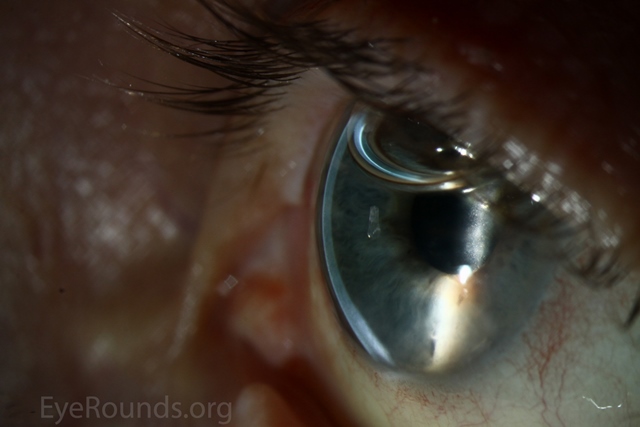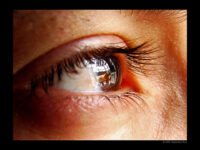Hey there, eye enthusiasts! Welcome back to our blog, where we dive deep into the intricate world of ophthalmology. Today, we’re going to explore an incredible advancement in eye surgery: Descemet Membrane Endothelial Keratoplasty, or DMEK for short. If you’ve ever wondered about the cutting-edge techniques used to restore vision and treat corneal diseases, you’re in for a treat! In this comprehensive guide, we’ll walk you through the ins and outs of DMEK, breaking down the procedure, discussing its benefits, and shedding light on the latest advancements. So grab a cup of coffee, sit back, and get ready to explore the fascinating world of DMEK!
What is Descemet Membrane Endothelial Keratoplasty (DMEK)?
Descemet Membrane Endothelial Keratoplasty (or DMEk for short) is an innovative and highly specialized corneal transplant procedure that aims to restore vision in individuals suffering from corneal diseases arising from irregularities in the endothelium layer. The endothelium, a thin layer of cells at the back of the cornea, plays a crucial role in maintaining corneal transparency and clarity. However, certain conditions can lead to dysfunction or damage of these cells, resulting in impaired vision. This is where DMEk comes into play, serving as an effective solution for patients by replacing the damaged endothelium with healthy donor tissue. By using this groundbreaking technique, not only is the visual acuity of patients greatly improved, but their overall quality of life is enhanced as well. DMEk has revolutionized the field of corneal transplantation, giving hope to those who suffer from corneal diseases and enabling them to regain clear and crisp vision, ultimately freeing them from the constraints imposed by their condition.
Descemet membrane endothelial keratoplasty, commonly referred to as DMEk, is an innovative surgical procedure used to treat corneal diseases. With this technique, only the damaged inner layer of the cornea, known as the endothelium, is replaced with a healthy donor endothelium. Unlike other types of corneal transplant surgery, DMEk leaves the outer layers of the patient’s own cornea intact. This approach offers several advantages, particularly in terms of post-operative vision recovery. By preserving the outer layers, DMEk ensures that visual acuity is regained at a considerably faster rate. Therefore, patients who undergo DMEk can experience improved vision soon after the surgery. This groundbreaking procedure has revolutionized the field of corneal transplantation and has become a preferred choice for those seeking a quicker and more effective solution to corneal disease.
Thus, descemet membrane endothelial keratoplasty, commonly known as DMEC, emerges as an innovative surgical technique that revolutionizes corneal transplantation. By employing an air bubble and specialized instruments, eye surgeons delicately roll up and insert a thin piece of donor tissue into the patient’s eye, resembling a postage stamp in size. This procedure not only ensures minimal trauma to the eye but also significantly reduces the recovery time for patients compared to other corneal transplant methods. Through this groundbreaking approach, DMEC exemplifies a pivotal advancement in ophthalmology, offering hope and improved outcomes for those suffering from corneal diseases or disorders. The utilization of intricate techniques and cutting-edge technology underscores the tremendous progress in medical science, ultimately enhancing the quality of life for countless individuals worldwide.
Benefits of DMEK
Descemet membrane endothelial keratoplasty (DMEK) represents a significant advancement in corneal transplant surgery. As a form of endothelial keratoplasty, DMEK offers remarkable benefits and stands out as the most advanced type of this procedure. By focusing on the transplantation of the Descemet membrane and the endothelial cells, DMEK ensures a high success rate and improved visual outcomes. The selectivity of DMEK allows for faster visual recovery, minimized astigmatism, and enhanced visual quality compared to other corneal transplant techniques. Additionally, DMEK reduces the likelihood of graft rejection and provides a thinner graft profile for superior patient comfort. This groundbreaking approach has revolutionized corneal transplantation, demonstrating its immense potential in offering patients optimal results for their vision and overall eye health.
Descemet membrane endothelial keratoplasty (DMEK) stands out from other corneal transplant procedures due to its unique approach. Unlike traditional methods, DMEK focuses solely on replacing the innermost layer of cells, known as the endothelium. This innovative technique offers several advantages, the most notable being a reduced risk of rejection. By removing only a minimal amount of tissue during the procedure, the likelihood of the recipient’s immune system recognizing the transplant as foreign is significantly minimized. The use of DMEK in corneal transplant surgery not only ensures successful restoration of vision but also prioritizes the patient’s overall well-being and long-term outcome.
Read also: Cornea Eye Transplant Surgery
Descemet membrane endothelial keratoplasty (DMEK) is an innovative surgical technique that offers numerous advantages compared to traditional corneal transplant procedures. One of the most notable benefits is the significantly shorter post-operative recovery time associated with DMEK. Unlike older methods, DMEK allows patients to resume their normal activities within just a day or two after the surgery. This means that individuals who undergo DMEK can quickly return to their daily routines, minimizing disruption to their lives. Such rapid recovery is a testament to the effectiveness and efficiency of the descemet membrane endothelial keratoplasty procedure.
Next, descemet membrane endothelial keratoplasty (DMEK) can be recognized as an innovative surgical technique that offers remarkable visual outcomes compared to traditional corneal transplant procedures. With DMEK, patients often experience a significant improvement in their vision within just 48 hours after the procedure. This swift restoration of visual acuity sets DMEK apart from other treatment options and underscores its superiority in providing quick and effective results for patients suffering from corneal endothelial dysfunction. By preserving the patient’s own Descemet membrane and selectively transplanting only the necessary endothelial cells, DMEK ensures enhanced postoperative visual recovery and long-term graft survival rates. Overall, the exceptional visual outcomes achieved with descemet membrane endothelial keratoplasty establish it as a groundbreaking solution in the field of corneal transplantation.
Indications for DMEK
Descemet membrane endothelial keratoplasty, commonly known as DMEk, is a highly effective surgical procedure used as a primary treatment for individuals suffering from corneal endothelial dysfunction caused by Fuchs’ dystrophy, pseudophakia bullous keratopathy, or congenital hereditary endothelial dystrophies. This innovative surgical technique involves the transplantation of a thin Descemet membrane along with a layer of healthy endothelial cells onto the patient’s damaged cornea, providing a long-lasting solution to their visual impairment. DMEk has emerged as a go-to treatment option due to its remarkable success rates and the ability to restore optimal corneal function. By specifically targeting the underlying cause of the dysfunction and utilizing the patient’s own healthy tissue, DMEk ensures a smoother recovery and reduces the risk of complications. With the advancement of medical technology, DMEk has revolutionized the field of corneal transplantation, offering countless individuals a chance to regain their visual acuity and improve their overall quality of life.
Descemet membrane endothelial keratoplasty, often referred to as DME
Descemet membrane endothelial keratoplasty, commonly known as DMEk, is a procedure that may be recommended for patients who are experiencing acute or chronic endothelial failure. This condition can arise from various causes, such as trauma, intraocular surgery, contact lens over-wear, drug toxicity, or iridocorneal endothelial syndromes. DMEk has emerged as an effective solution to address these issues and improve the overall health of the cornea. By selectively replacing the damaged Descemet membrane and endothelial cells with healthy ones, DMEk aims to restore the cornea’s normal function and provide better visual outcomes for patients. This innovative approach offers promising results and gives hope to individuals dealing with endothelial failure caused by different factors.
Meanwhile, in cases where traditional corneal transplant surgeries may not be suitable or effective due to anatomical limitations such as severe corneal thinning or irregularity, descemet membrane endothelial keratoplasty emerges as a recommended alternative. This advanced surgical procedure, also known as DME, offers a promising solution for individuals who may not have other viable options. By selectively replacing the thin layer of cells responsible for maintaining corneal clarity and function, DME enables surgeons to restore vision and improve overall eye health. With its growing success rate and numerous advantages, descemet membrane endothelial keratoplasty is paving the way for enhanced outcomes and quality of life for patients struggling with corneal conditions.
Risks and Complications of DMEK
Descemet membrane endothelial keratoplasty, commonly known as DMEKI, is a surgical procedure aimed at treating corneal endothelial dysfunction. However, it is crucial to understand the potential risks associated with this operation before making the decision to undergo it. One of the inherent risks of DMEKI includes graft failure, which has been reported to occur in approximately 10% of cases. Additionally, there is a possibility of complications such as retinal detachment, glaucoma, and inflammation. These risks emphasize the importance of carefully considering the potential outcomes and discussing them thoroughly with a healthcare professional. While DMEKI can be an effective treatment option for corneal endothelial dysfunction, it is essential to be well-informed about the possible risks involved in descemet membrane endothelial keratoplasty.
Descemet membrane endothelial keratoplasty, a surgical procedure aimed at restoring the endothelial layer of the cornea, offers potential benefits but is not without challenges. During this procedure, surgical difficulties can arise, particularly related to the delicate nature of the graft. One such challenge is the difficulty in unfolding the graft due to its fragility. The fragile nature of the graft may pose complications during the procedure, requiring utmost care and precision from the surgeon. In addition, another potential obstacle in descemet membrane endothelial keratoplasty is encountered when performing endothelial cell transplantation. The small size of the graft can pose difficulties and intricate maneuvers may be required during transplantation to ensure proper placement and functionality. These challenges highlight the technical intricacy and precision demanded by descemet membrane endothelial keratoplasty, emphasizing the importance of expertise and skill in overcoming surgical obstacles for successful outcomes in this procedure.
Descemet membrane endothelial keratoplasty, commonly known as DMEk, is a surgical procedure used for corneal transplantation. Although it is considered a highly effective treatment option, there are potential complications that need to be addressed. One of the major risks associated with DMEk is the possibility of infection and inflammation. This includes conditions like uveitis and endophthalmitis, which can pose serious threats to the patient’s ocular health. Additionally, corneal oedema, characterized by the accumulation of fluids in the cornea, can occur after the procedure and may impede visual acuity. Another complication that may arise is double vision, which can be caused by an imbalance in corneal thickness. While these complications are not common, it is essential for patients to be aware of them and for healthcare professionals to take appropriate measures to minimize the risks during DMEk procedures.
Thereafter, patients undergoing descemet membrane endothelial keratoplasty should be fully cognizant of the potential risks associated with the procedure. While DME
Preparation for Surgery
When considering descemet membrane endothelial keratoplasty ( DMEK), it is crucial to thoroughly evaluate the patient for any pre-existing medical conditions and co-morbidities that could potentially interfere with the surgical procedure or the subsequent healing process. By undertaking a comprehensive assessment, healthcare professionals can identify any risks or complications that may arise during or after the surgery, highlighting the need for appropriate precautions or modifications to treatment plans. Assessing the patient’s medical history, including any chronic illnesses, allergies, or systemic conditions, enables healthcare providers to develop an individualized approach that promotes optimal outcomes and minimizes potential complications. This proactive approach ensures that the patient’s overall health and well-being are prioritized throughout the DMEK procedure, keywords “descemet membrane endothelial keratoplasty”.
Descemet membrane endothelial keratoplasty (DMEK) is a surgical procedure used to treat corneal endothelial dysfunction. During this procedure, the Descemet membrane and endothelium are replaced with donor tissue to improve vision and reduce corneal swelling. However, before undergoing DMEK, it is important to consider the medications a patient is currently taking. This is crucial as certain medications may increase the risk of infection or other complications during surgery. Therefore, it is recommended that medications be altered or adjusted prior to undergoing DMEK to ensure the highest level of safety and effectiveness. By carefully evaluating and modifying medication regimens, healthcare professionals can help minimize potential risks and optimize the outcomes of Descemet membrane endothelial keratoplasty.
When undergoing descemet membrane endothelial keratoplasty (or DMEK), it is crucial to conduct all necessary preoperative tests to guarantee a successful outcome. These tests include laboratory testing of blood and urine, imaging studies, and a detailed eye exam. By ensuring that these tests are completed prior to surgery, the medical team can thoroughly assess the patient’s overall health and identify any potential complications or risks that may impact the procedure. Not only does this help in developing an appropriate surgical plan, but it also helps minimize the chance of postoperative complications. Therefore, it is of utmost importance to prioritize and complete these preoperative tests in order to achieve the best possible results for patients undergoing descemet membrane endothelial keratoplasty.
Meanwhile, when it comes to descemet membrane endothelial keratoplasty, it is crucial to prioritize the patient’s individual needs to ensure successful outcomes. In this regard, the expertise of a corneal transplant specialist becomes invaluable. By thoroughly assessing the patient’s case, the specialist can identify any necessary additional preparation protocols that may further enhance the success of the procedure. This might include advising the patient to discontinue using contact lenses several weeks prior to surgery, as well as recommending specific eye drops to prevent infection during the postoperative period. By meticulously addressing these factors, the surgeon can ensure that the patient receives the best possible care and achieves optimal results from this advanced corneal transplant technique.
Procedure Details
Descemet membrane endothelial keratoplasty (DMEK) has emerged as a highly sought-after corneal transplant procedure, offering a revolutionary solution for individuals suffering from diseased endothelial layers of the eye. This cutting-edge technique involves the meticulous replacement of damaged tissue with healthy donor material, ensuring the restoration of optimal visual acuity and overall eye health. The increasing popularity of DMEK is a testament to its remarkable success rates and long-lasting results. By addressing the specific needs of patients with conditions such as Fuchs’ endothelial dystrophy or corneal edema, DMEK has set a new standard in corneal transplantation. Its ability to precisely target the affected area while minimizing post-operative complications showcases the advancement of medical technology in vision care. With the utilization of this procedure, ophthalmologists worldwide are making significant strides in improving patients’ lives and restoring their sight with impressive precision and expertise.
Descemet membrane endothelial keratoplasty (DMEK) is an innovative procedure that offers numerous advantages over traditional cornea transplantation methods. One notable benefit is that DMEK requires a significantly smaller incision, which minimizes tissue trauma and promotes faster healing. Additionally, this technique contributes to better post-operative vision outcomes, enhancing the overall visual acuity of patients who undergo the procedure. By specifically targeting the diseased endothelial layer of the cornea, DMEK ensures a more precise and effective treatment approach. The preservation of healthy tissue in this procedure also reduces the risk of graft rejection, making it a preferred option for many patients in need of corneal transplantation. DMEK proves to be a significant advancement in ophthalmology, providing improved surgical outcomes and an enhanced overall patient experience.
Descemet membrane endothelial keratoplasty (or DMEK) is a surgical procedure that involves the transplantation of a single layer of cells called the Descemet membrane. This technique offers several advantages, particularly in terms of reducing the risk of graft rejection and inflammation. By utilizing only a single layer of cells, DMEK minimizes the chances of the body’s immune system identifying the transplanted tissue as foreign and mounting a rejection response. Additionally, the reduced presence of additional layers of cells decreases the likelihood of inflammation occurring post-surgery. As a result, patients undergoing DMEK can experience significant improvements in their visual clarity, leading to better overall vision outcomes.
Finally, in descemet membrane endothelial keratoplasty ( DMEK), a revolutionary technique has been introduced where a thin sheet of donor tissue is delicately placed beneath the original Descemet’s membrane and secured meticulously with air bubbles to ensure precise positioning for optimal healing. This innovative procedure has shown promising outcomes, offering patients with corneal endothelial dysfunction a chance to regain their visual acuity and regain a better quality of life. With the advancements in surgical techniques and the use of state-of-the-art technology, DMEK has emerged as the gold standard in corneal transplantation, providing excellent visual results and improved patient satisfaction. As the field of ophthalmology continues to evolve, the use of DMEK in treating corneal diseases looks set to revolutionize the future of corneal transplantation, offering hope to countless individuals worldwide.
The Post-operative Healing Process
Post-operative healing for Descemet Membrane Endothelial Keratoplasty (DMEK) is a crucial aspect of this advanced surgical procedure. The recovery process can often last several months, requiring patience and compliance with the post-operative instructions provided by your doctor. Following these instructions diligently is essential for achieving a successful outcome and restoring optimal vision. Descemet Membrane Endothelial Keratoplasty is a specialized technique that replaces the damaged Descemet membrane and endothelial cells in the cornea, offering hope to individuals suffering from corneal endothelial dysfunction. This intricate procedure requires careful post-operative care to facilitate the regeneration of healthy tissue and promote the integration of the transplanted tissues. By adhering to your doctor’s guidelines, which may include the use of prescribed eye drops, regular follow-up visits, and protecting your eyes from excessive strain or trauma, you can significantly enhance your chances of a successful recovery. Patience and adherence to the post-operative instructions are paramount during the healing period for Descemet Membrane Endothelial Keratoplasty, ensuring a smooth and triumphant transition towards improved vision and overall eye health.
When undergoing descemet membrane endothelial keratoplasty, attending all of your scheduled post-operative appointments becomes crucial. These follow-up visits are essential as they allow your doctor to closely monitor your progress and ensure that the tissue graft remains securely attached. Through regular check-ups, your doctor can assess the success of the descemet membrane endothelial keratoplasty procedure and address any concerns or complications that may arise. By adhering to these appointments, you demonstrate a commitment to your recovery and give your doctor the opportunity to provide the necessary care and support for optimal outcomes.
Finally, in the field of descemet membrane endothelial keratoplasty, it is essential to understand that the recovery process can be a dynamic journey. While fluctuations in vision may be experienced as the graft continues to heal and settle, patients can take solace in the fact that most individuals witness a remarkable improvement in their vision quality within weeks following the surgery. The transformative impact of descemet membrane endothelial keratoplasty on patients’ lives cannot be overstated. Through this innovative procedure, those suffering from corneal endothelial dysfunction are afforded the opportunity to regain clarity and visual acuity. The promising outcomes and significant advancements achieved through descemet membrane endothelial keratoplasty represent a breakthrough in ophthalmic surgery, providing hope and restoration to countless individuals worldwide.
Recovery Tips and Potential Outcomes
Descemet membrane endothelial keratoplasty, also known as DMEk, is a highly effective surgical procedure utilized to address specific corneal conditions such as Fuchs’ dystrophy or pseudophakick bullous keratopathy. This cutting-edge technique involves the replacement of the innermost layer of the cornea, namely the Descemet membrane and its associated endothelial layer. By meticulously transplanting the healthy tissue from a donor, DMEk aims to restore and improve the vision of patients afflicted by these conditions. This groundbreaking procedure offers hope to those affected by corneal disorders, enabling them to experience an improved quality of life with enhanced visual clarity.
Descemet membrane endothelial keratoplasty, a surgical procedure that aims to improve vision in patients with corneal endothelial dysfunction, is associated with a relatively short recovery time. Typically, individuals undergoing this procedure can expect to feel comfortable enough to resume their normal activities within several days. The rejuvenation of vision is also a common outcome, as some patients report improved sight within a few weeks post-operation. This minimally invasive technique offers a ray of hope for those suffering from corneal issues, allowing them to return to their daily routines with minimal disruption. By delicately replacing damaged corneal tissue with a healthy donor graft, descemet membrane endothelial keratoplasty aids in restoring visual acuity and enhancing overall eye health.
Additionally, it is essential for patients to understand that descemet membrane endothelial keratoplasty can yield different outcomes depending on individual circumstances. While the procedure generally offers promising results, such as improved vision and relief from discomfort or sensitivity to light, it is crucial to acknowledge the potential risks involved. Complications, although uncommon, can include infections or rejection of the grafted eye tissue. Hence, to ensure the best possible outcome, it is imperative for patients to diligently adhere to post-operative instructions and closely follow up with their healthcare providers. By doing so, patients can maximize their chances of a successful recovery and achieve the optimal benefits of descemet membrane endothelial keratoplasty.
FAQs About DMEK
Descemet membrane endothelial keratoplasty (or DMEk) is a highly effective corneal transplant procedure specifically designed to address corneal endothelial failure. This condition occurs when the delicate inner layer of the cornea, known as the endothelium, becomes damaged. DMEk is a specialized surgical technique that involves replacing the damaged endothelium with a healthy donor tissue, known as Descemet’s membrane. By focusing on restoring the functionality of this crucial layer, DMEk provides patients with a renewed chance at clear vision and improved eye health. This innovative procedure has gained significant recognition for its success rates and ability to enhance patients’ quality of life.
Descemet membrane endothelial keratoplasty, a cutting-edge surgical procedure, offers a remarkable solution for those suffering from damaged corneal tissue. This innovative technique involves the replacement of the affected tissue with healthy donor tissue, ensuring the restoration of optimal eye health. What sets this procedure apart is its non-invasive nature, as it does not require any sutures or stitches. Thus, when undergoing Descemet membrane endothelial keratoplasty, patients need not worry about unsightly scarring on their cornea, allowing them to regain clear vision without compromising their appearance. With its advanced methodology and remarkable results, this procedure offers hope and improved quality of life to individuals suffering from corneal abnormalities.
Recovery from Descemet Membrane Endothelial Keratoplasty ( DMEk) is generally expected to take around three months. This innovative surgical procedure has proven to have minimal side effects in comparison to other corneal transplant methods. DMEk involves replacing the diseased or damaged endothelial layer of the cornea with a healthy donor tissue. During the recovery process, patients may experience mild discomfort, such as dryness or temporary blurry vision, but these effects are generally temporary and resolve themselves as the eye heals. The use of DMEk has offered patients a less invasive and more successful option for corneal transplantation, providing improved vision quality in a comparatively shorter span.
Similarly, it is evident that descemet membrane endothelial keratoplasty ( DMEk) stands as a superior option for individuals suffering from corneal endothelial failure. With its minimally invasive approach, DMEk not only boasts a higher success rate compared to other types of corneal transplants but also delivers enhanced vision outcomes. By specifically targeting the diseased corneal endothelium and replacing it with a healthy donor tissue, DMEk offers a remarkable solution that optimizes the patient’s chances of a successful recovery and improved visual acuity. This groundbreaking procedure revolutionizes the field of corneal transplantation and showcases the remarkable benefits of descemet membrane endothelial keratoplasty in treating corneal endothelial failure.







